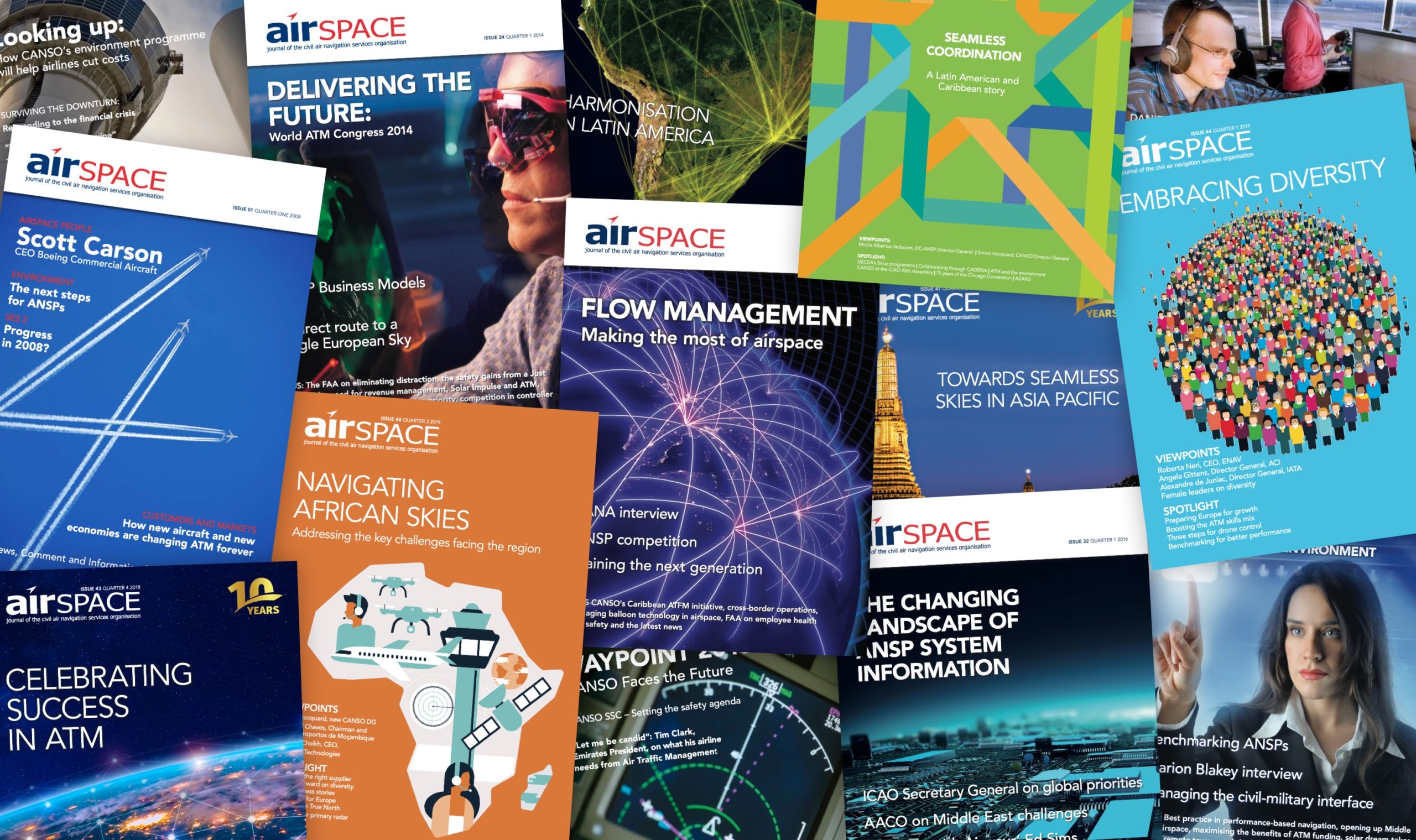Airspace Q4 2019 – Put an end to isolation

Farhan Guliyev, Director, AZANS, outlines the ANSP’s provision of cost-efficient, safe, secure, flexible and sustainable ATM while implementing advanced technologies and solutions.
Today, every part of business is subject to smart developments, new competitors, challenges, threats and opportunities. As the number of smart devices, such as phones, tablets, PCs and electronic cars increases, companies that quickly deliver digital products or services and those who reap data and use insights to rapidly optimise their value chain, are gaining a corresponding advantage.
Today, every part of business is subject to smart developments, new competitors, challenges, threats and opportunities. As the number of smart devices, such as phones, tablets, PCs and electronic cars increases, companies that quickly deliver digital products or services and those who reap data and use insights to rapidly optimise their value chain, are gaining a corresponding advantage.
Many companies today are at different stages of digital transformation. Achieving maturity requires the courage to challenge entrenched beliefs within one’s organisation. A company that wishes to stay one-step ahead must learn to identify and question entrenched “facts” and discover how technology can influence them.
Companies that use everything in digital form can interact more closely with customers and operations, increase the quality and level of services and contribute to the company image.
Transforming aviation
The world of aviation and space is at the forefront of this revolution. It must follow the increasingly high quality standards set by its customers throughout the value chain and manage the emergence of new players who can offer solutions based on new digital technologies. All stakeholders in the air transport industry are targets of this transformation.
Take modern flight entertainment solutions, for example. The ability to offer passengers more personalized options and provide them full access to high-speed Internet during flight, allowing them to manage their personal or business affairs, poses enormous technical challenges.
But these innovations are just the tip of the iceberg, merely representing digital opportunities that are most easily perceived by the public.
In addition to a closer and more thorough relationship between the customer and the business, airlines and air navigation service providers (ANSP) must develop digital technologies that take advantage of connectivity so they can work together.
This connection requires the installation of secure, seamless communication lines between aircraft, as well as between air, ground and satellite devices. Cybersecurity is vital in this regard.
Unmanned and civilian aircraft must be protected from terrorist threats. But the risk of cyberattacks increase with the introduction of non-aviation digital technologies and concepts, including 5G, Wi-Fi, and web-based applications.
An isolated approach will not solve existing and future problems in this area. The fact is we are all already connected to each other. Only joint efforts will provide resilience against cyberattacks and build a strong common cybersecurity platform that will help us to avoid problems in the future.
It is very important to get the entire aviation value chain involved, including system and technology suppliers, even though they are sometimes reluctant to share their proprietary information due to commercial interests. A declaration on joint efforts against cyber threats among ATM partners was signed in Baku in 2019, showing that we are on the right path.
Managing traffic flow
AZANS, meanwhile, is forging ahead with the implementation of technologies that will assist in the provision of cost-efficient, safe, secure, flexible and sustainable air traffic management.
We are the global launch customer for ECOsystem, for example, an advanced traffic flow management application. The implementation of ECOsystem in the Airspace Supervision and Efficiency Center (ASEC) supports AZANS’ goals of high-quality air navigation services in line with international standards and modernizing technical systems and information services.
The ECOsystem is structured with a suite of advanced cybersecurity features and enables AZANS to:
- Better forecast demand and manage capacity
- Proactively optimise flights according to weather, congestion and other factors
- Assess the expected impact of initiatives before implementation
- Seamlessly integrate with arrival and departure sequencing tools
- Reduce flight time, fuel load/burn, and associated environmental impact
- Optimise the use of resources and improve controller productivity
Weather forecast
Another new high-tech project is the implementation of a virtual air traffic control tower. This is the first of its kind in Azerbaijan. The virtual tower will enable AZANS to perform contingency operations at Azerbaijani airports by providing air traffic services remotely from Baku.
Digitisation in the field of meteorological information provision of flights is also one of the main aims of AZANS. Some digital weather technologies have already been launched and it is expected that the project will be completed in the first half of 2020. Digital ATIS/VOLMET allows pilots to retrieve information on local weather conditions or runway and taxiway instructions via DataLink. It is also planned to establish a system of digital and artificial intelligence weather forecasting over the territory of the Republic of Azerbaijan and the Caspian Sea.
The implementation of datalink services also enables AZANS to transmit clearance information to departing aircraft via datalink. This is accomplished through a highly available, simple, secure and easy-to-use turnkey Datalink Departure Clearance (DCL) service.
Finally, AZANS is looking to develop and safely integrate unmanned aircraft into controlled airspace by leveraging the advances brought about by digital transformation. Our priority is to ensure that by embracing innovation, we don’t compromise the safety of traditional manned aviation operations.
Assessment planning
The world of air traffic control is changing fast with technological revolution pushing the industry into the digital era. As a result, regulations, staff recruitment, customer and airline expectations, competition and new airspace users all require a fresh approach.
The pace of change is such that timely planning, the correct allocation of recourses and informed decision making are all critical even as the highest levels of flight safety are maintained.
This requires significant financial resources and shifting from a traditional short-term approach to performance and assessment-based planning. This approach was behind the implementation of the ASEC centre.
But most of all, it needs partnership between ANSPs and the aviation value chain. Let’s put our efforts into breaking the isolation of the ANSP world.


